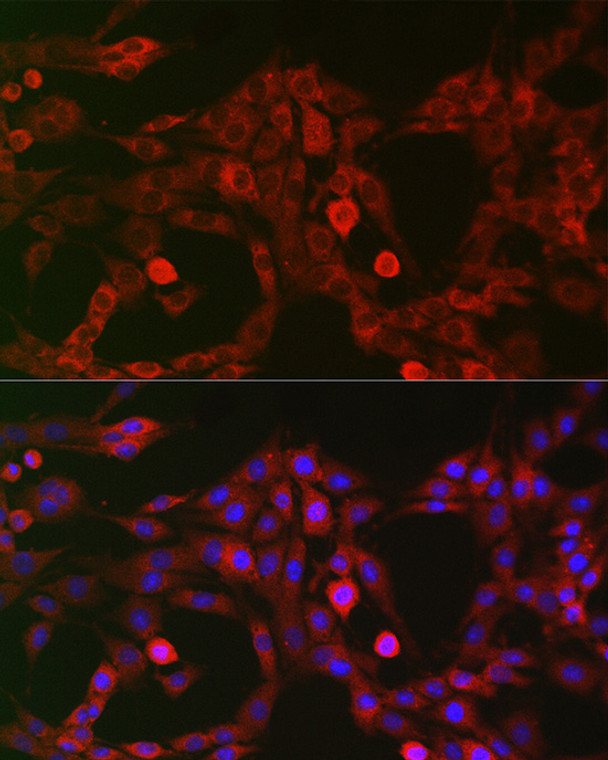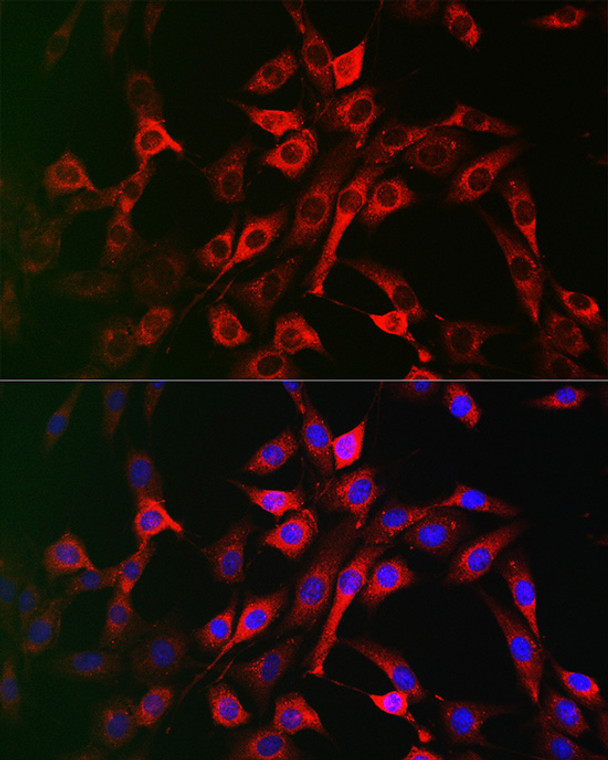| Host: |
Rabbit |
| Applications: |
WB/IF |
| Reactivity: |
Mouse/Rat |
| Note: |
STRICTLY FOR FURTHER SCIENTIFIC RESEARCH USE ONLY (RUO). MUST NOT TO BE USED IN DIAGNOSTIC OR THERAPEUTIC APPLICATIONS. |
| Short Description: |
Rabbit polyclonal antibody anti-LRP5 (1415-1435) is suitable for use in Western Blot and Immunofluorescence research applications. |
| Clonality: |
Polyclonal |
| Conjugation: |
Unconjugated |
| Isotype: |
IgG |
| Formulation: |
PBS with 0.05% Proclin300, 50% Glycerol, pH7.3. |
| Purification: |
Affinity purification |
| Dilution Range: |
WB 1:100-1:500IF/ICC 1:50-1:200 |
| Storage Instruction: |
Store at-20°C for up to 1 year from the date of receipt, and avoid repeat freeze-thaw cycles. |
| Gene Symbol: |
LRP5 |
| Gene ID: |
4041 |
| Uniprot ID: |
LRP5_HUMAN |
| Immunogen Region: |
1415-1435 |
| Immunogen: |
A synthetic peptide corresponding to a sequence within amino acids 1415-1435 of human LRP5 (NP_002326.2). |
| Immunogen Sequence: |
YAGANGPFPHEYVSGTPHVP L |
| Tissue Specificity | Widely expressed, with the highest level of expression in the liver and in aorta. |
| Post Translational Modifications | Phosphorylation of cytoplasmic PPPSP motifs regulates the signal transduction of the Wnt signaling pathway through acting as a docking site for AXIN1. |
| Function | Acts as a coreceptor with members of the frizzled family of seven-transmembrane spanning receptors to transduce signal by Wnt proteins. Activates the canonical Wnt signaling pathway that controls cell fate determination and self-renewal during embryonic development and adult tissue regeneration. In particular, may play an important role in the development of the posterior patterning of the epiblast during gastrulation. During bone development, regulates osteoblast proliferation and differentiation thus determining bone mass. Mechanistically, the formation of the signaling complex between Wnt ligand, frizzled receptor and LRP5 coreceptor promotes the recruitment of AXIN1 to LRP5, stabilizing beta-catenin/CTNNB1 and activating TCF/LEF-mediated transcriptional programs. Acts as a coreceptor for non-Wnt proteins, such as norrin/NDP. Binding of norrin/NDP to frizzled 4/FZD4-LRP5 receptor complex triggers beta-catenin/CTNNB1-dependent signaling known to be required for retinal vascular development. Plays a role in controlling postnatal vascular regression in retina via macrophage-induced endothelial cell apoptosis. |
| Protein Name | Low-Density Lipoprotein Receptor-Related Protein 5Lrp-5Low-Density Lipoprotein Receptor-Related Protein 7Lrp-7 |
| Database Links | Reactome: R-HSA-201681Reactome: R-HSA-3772470Reactome: R-HSA-4641262Reactome: R-HSA-4641263Reactome: R-HSA-5339717Reactome: R-HSA-5340588 |
| Cellular Localisation | MembraneSingle-Pass Type I Membrane ProteinEndoplasmic ReticulumChaperoned To The Plasma Membrane By Mesd |
| Alternative Antibody Names | Anti-Low-Density Lipoprotein Receptor-Related Protein 5 antibodyAnti-Lrp-5 antibodyAnti-Low-Density Lipoprotein Receptor-Related Protein 7 antibodyAnti-Lrp-7 antibodyAnti-LRP5 antibodyAnti-LR3 antibodyAnti-LRP7 antibody |
Information sourced from Uniprot.org
12 months for antibodies. 6 months for ELISA Kits. Please see website T&Cs for further guidance









